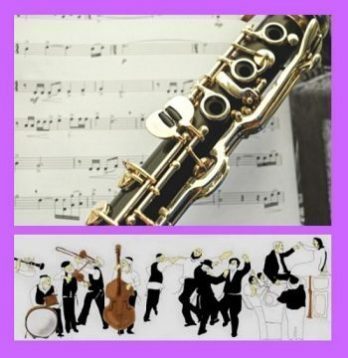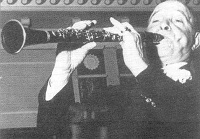
A selection of klezmer tunes where the clarinet is predominent
Naftule Brandwein, Dave Tarras, David Krakauer, Yom, Marine Goldwaser, Giora Feidman, Michael Winograd… So many names that rhime with klezmer music, but even more with one of its favorite instruments: the clarinet !
This musical instrument from the woods family was created around 1690 by Johann Christoph Denner in Nuremberg. Of all wind instruments of its family, the clarinet has the largest tessitura with three octaves plus a minor sixth, constituting 45 notes altogether. It is declined in a family of about 12 instruments that can be transposed for most of them, from the double bass clarinet to the sopranino clarinet, covering thus the full register of a symphonic orchestra.

Klezmer music is strongly linked to Jewish weddings and its many rituals. The clarinet – of which it is said to be the closest instrument to the human voice – borrows the many vocal ornementations of East European cantors, such as the krekhts (whine).
Here is a selection of klezmer tunes, performed by the greatest clarinet players of yesterday and today.
- Read Hervé Roten’s article on klezmer music
- Look at Michel Borzykowski’s website on klezmer music
- Listen and purchase the sheet music 20 nigunim for clarinet and piano by Claudine Movsessian and Martine Vialatte
- Purchase the musical score Balade Klezmer, for clarinet, violin and cymbalum by Serge Kaufmann




